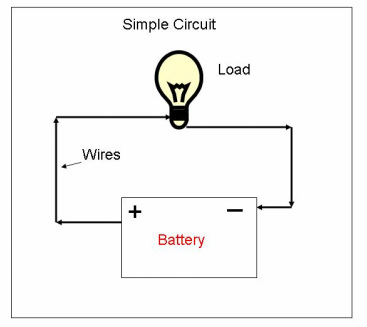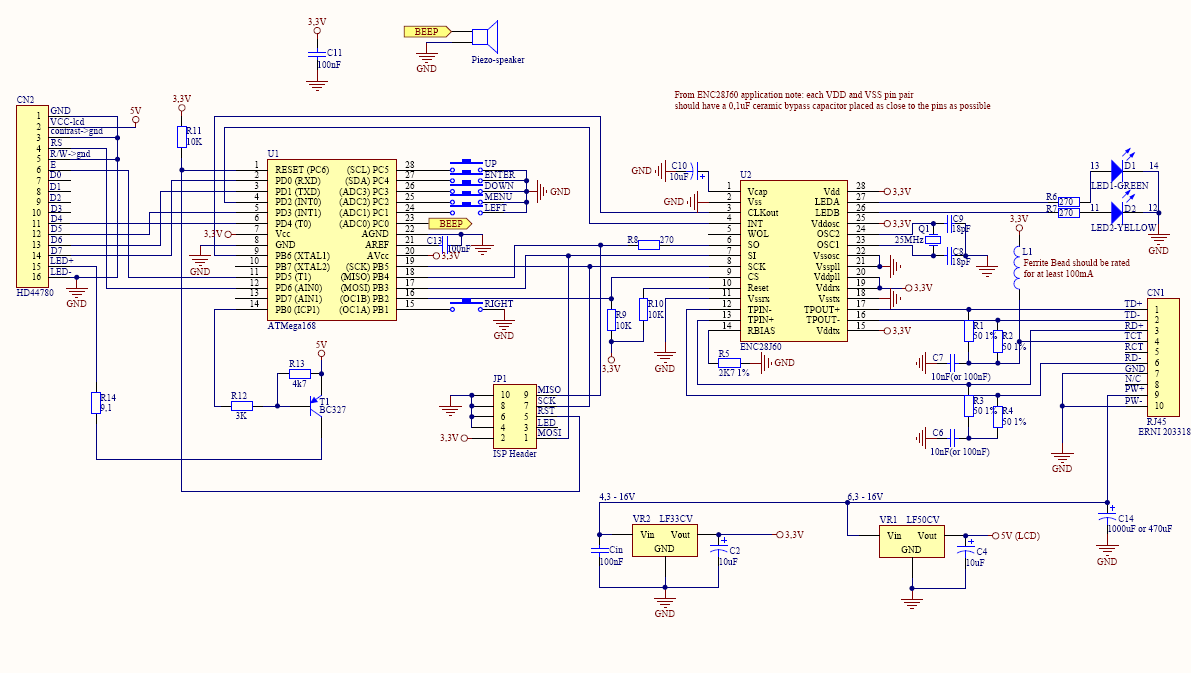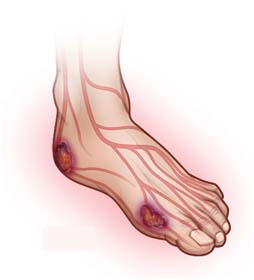Printed Circuit Boards (PCB)
Chances are you have built at least some simple circuits before. In most high school science classes for example, teachers usually have some lab in which you build a circuit using a battery, some jumper wires, and a few light bulbs. Circuit labs are always some of my favorites. The results of functional circuits (all electronics) now play such an integral part of our daily lives, and I find it fascinating and practical to learn about how they work regardless of what field I ultimately hope to pursue. Anyway, these sorts of circuit labs allow students to learn a little about concepts of current, voltage, resistance etc. This typically goes hand in hand with a discussion of how current moves through different types of circuits (series circuits vs. parallel ones as pictured below), and you can then get into alternating and direct current systems, but the basic gist is summed up by the image below: Voltage difference between the positive and negative terminals of a battery causes current to flow which can then do interesting things. Simple.

PCB's work on essentially the same basic principals that the simple circuits you are probably familiar with do but on a much smaller scale and usually on a more complex level. They are typically made from plastic reinforced with glass and copper wires acting as the jumper wires did. Components (like the resistors, capacitors and microprocessors) then have to be soldered on or into the boards using a type of metal solder. A fluid called "Flux" is used to help the solder flow correctly and ward off shorts especially for the more complicated components like the integrated circuits. After boards are finished, they then undergo a cleaning process to remove the sticky residue caused by the flux and prevent corrosion.
The process of making a PCB starts with the design. At Marcus Engineering,
Altium Designer software is used to design schematic layouts of all our boards. These schematics tend to look something like this:

But you can also get board images to appear like this with the software:

Or as 3-D models like this:

These schematics are then sent in to board manufacturers. What happens there is a bit mysterious to me but basically the digital schematics are converted into pixle images. The inner layers (copper and glass) are added and then the outer layers and then a finish. Once that happens, they are silk screened and then sent back to the company as a beautiful finished board. Next comes
soldering. While I had not soldered before starting here, I had done a fair amount of welding. Welding and soldering are pretty similar except that 1. soldering the PCB's require working on a much smaller scale than welding (I use tweezers and sometimes a magnifying glass when I work) and 2. in soldering, the pieces you are attaching together (a component to the board) do not actually melt. I have done a lot of soldering here by now. I use tweezers to align components and then solder them down. I find the process very zen. Through placing the components, and studying schematics one has to learn about what each one does and how it is labelled. Here is a dictionary of the common parts I see:
Resistors (R): a component that reduces current flow and lowers voltage levels in a circuit. They can have fixed or varying resistance values.
Capacitors (C): pairs of conductors separated by insulation that can store electric charge.
Diode (D): allows current to flow in only one direction. Some of these used for the boards are small LED's which light up when the current flows. This can tell you a lot about how the board is working.
Fuse (F): a low resistance resistor that melts if current is too great--protecting the rest of the board.
Jack (J): allow for the board to connect with other sources. There are tons of different types.
Inductor (L): resists changes in current. These contain a conductor like a wire coil that generates a magnetic field when current flows.
Relay (K): an electrically operated switch.
Transistor (Q): semiconductor that can switch/amplify power or signals.
Variable resistor (VR): contains a sliding component that adjusts a voltage divider allowing for varying resistance. I have been using two types of these for the arduino project I am working on. Mainly a linear one called a
"soft pot."
Integrated circuit or microchip (U): these are my favorite components. They are basically tiny circuits themselves that contain their own components. They can be super small (down to around only tens of nanometers). Putting me on them on the PCB's make me think of the
Russian nesting dolls because within the circuit I am building there is a smaller circuit within the microchip. (Below is a photo of some integrated circuits).

While soldering at Marcus Engineering is done by hand by people like me, some huge industrial companies have automated soldering systems. The robots are programmed to place components and then the boards are heated until the components attach. There are some really cool videos of this process that I suggest checking out. Here's
one. At the company, we are actually working on converting an old toaster oven into a heater that could do the heating part of the soldering process for us.
I have also been doing testing of these boards which means I have been spending lots of time with the multimeters, which is fun.
BOM
I have learned about the reverse engineering processes--figuring out how things work by taking finished ones apart. This is a basic idea, but in practice it can be very time consuming. While some components on PCB's have their part numbers printed directly on them, others have no markings at all. This means that sometimes I can spend hours looking through digikey and mouser catalogue listings in search of the right parts.
Skill Building: Arduino, Altium, CAD, Photoshop
Arduino: I received an Arduino start up kit for Christmas this last year. When I came here, I had already worked through a number of the projects outlined in the project book that came with the kit. Arduino is a simple microcontroller that is great for DIY projects. It uses C++, is mostly open-sourced and has a wonderfully supported online community/forum. As I mentioned last week, one project the company is working on involves designing a control board for a linear actuator that will be part of a robotic arm set up. To do this, I have been teaching myself a lot about arduino and arduino coding. I designed a set up that ran the motor in one direction while feeding position info (from the soft pot potentiometer in the actuator) into the serial port. I then went on to redesign the set up incorporating an H-bridge so that I could have the motors run in both directions. I fear the H-brige might be broken or some error might be in my code because so far the motor won't run in either direction. While I have been scouring the arduino forums for help, it is still in the works. Once I get that working, I will redesign it again using a small pololu motor control board that I have. From there, we can design a PCB to control the actuator.

I have also been working through tutorials for
Solidworks and
Altium. I have also been doing work with photoshop, making labels for the interlock module systems.
Miscellaneous Ventures:
Inspired by my work, I have been doing some self-teaching about wifi-controlled irrigation systems, and the future of farming. National Geographics have been doing a lot about this
topic which I think is great. I am also trying to get up to date on 3-D printing technologies, and after hearing the newest RadioLab
episode, I have decided to build my own TDCS device as a fun side project.
My SRP Plans
I am still feeling very excited about my SRP project. I had already narrowed the topic to type II diabetes. As I mentioned, I have met with Dr. Armstrong. I will be meeting with him again soon as well as some of his colleagues (most likely including
Dr. Bharara and
Dr. Najafi). I am really excited about continuing to work with them at the UMC, because they are all so inspiring, intelligent and generous. In addition to getting the perspective of these giants in the diabetic field, I have also been put into contact with another of my idols--Dr. Breanne Everett, who is a doctor and CEO of
Orpyx Medical Technologies. Lastly, I have also reconnected with the Yaqui
El Rio clinic (where I volunteered the last two summers) as well as the
Yaqui Wellness Center which focuses on diabetes prevention through lifestyle shifts. I plan to spend part of my January project period working on with the Yaqui health organizations on diabetes related projects. While Dr. Marcus, Dr. Armstrong and his team, and Dr. Everett are providing me with a strong medical/engineering perspective for my project, through my connections with the Yaqui tribe I plan to further my understanding of the public health preventative perspective on diabetes. I recently discussed my project plans with my previous mentor from El Rio, the amazing
Dr. Renteria. Lovely as always, he reminded me not to become too nearsighted focusing on the engineering and biology side of this project. He called on me to consider the longer term causes of diabetes such as depression, lack of access, poverty etc. and once again awakened my passion for public health.
For my project itself, I have found that while Dr. Armstrong, Dr. Everett etc. are making huge leaps and bounds with regard to developing cutting edge tech to help diabetics, these devices tend to be very expensive. This makes sense because they are in the stream of high quality, complex wearable technologies--some of the first of their kind. The only problem is that diabetes is a disease highly correlated with poverty, and my fear is that these immensely cool treatment devices will not make it to many of the people who need them the most. I have several low cost project ideas in this are spanning issues including pain management devices, sensory support devices, fainting/emergency technologies, and pill reminders. After my meetings in the coming week, I plan to have settled on one of these and begin my designs.
Best wishes,
Xóchitl









